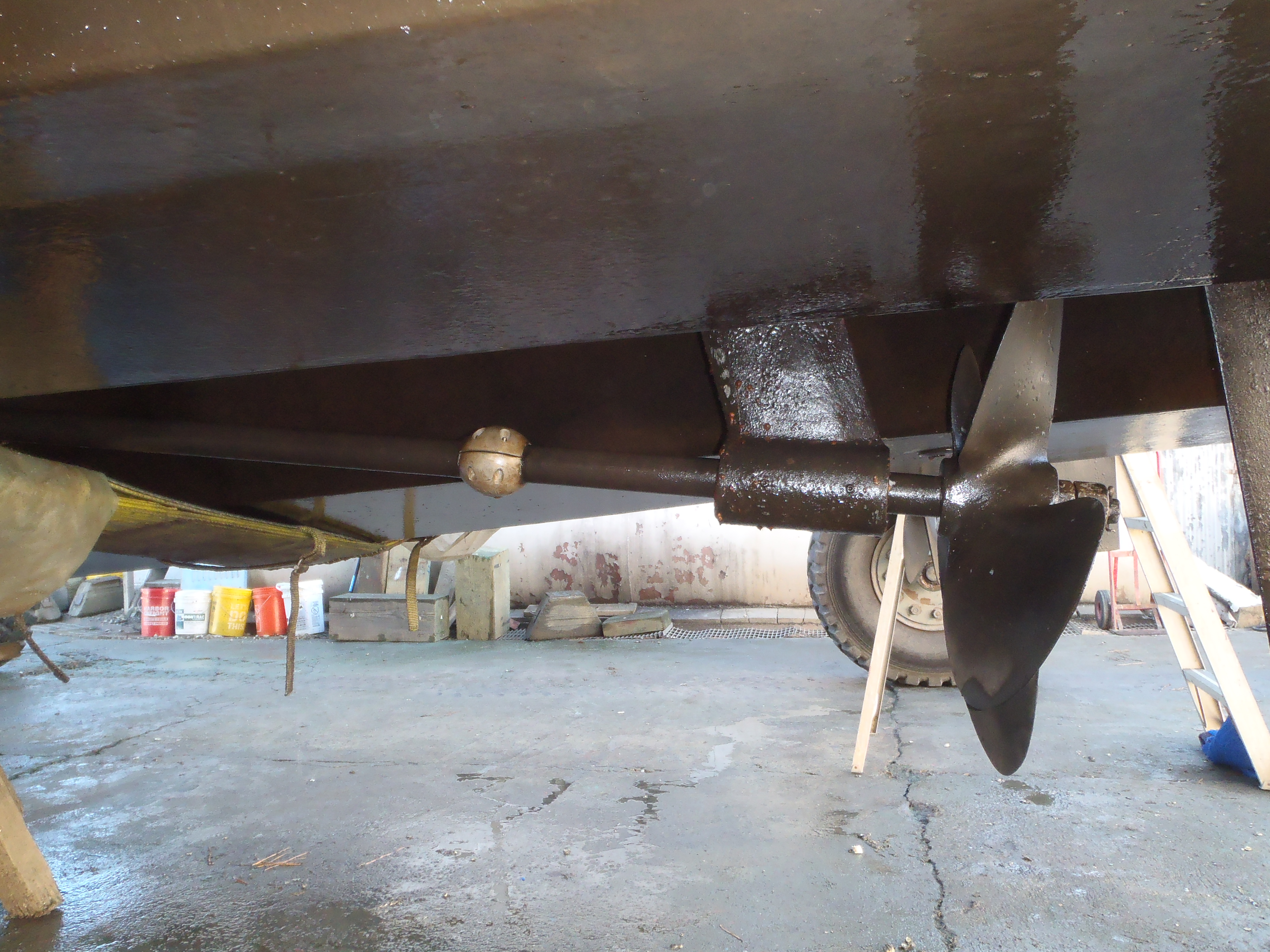Drivetrain Components Every Inboard Boat Owner Should Know How to Inspect
An inboard-powered vessel’s drivetrain is typically defined as the components between the engine transmission coupling and the “bitter end” of the propeller shaft. For traditional drivetrains, this includes the propeller, shaft, cutless bearing and packing gland, although the list could also be expanded to encompass ancillary items such as the rudder, engine mounts and engine bed works. Here’s a look at three major drivetrain components you should know and what to look for when inspecting each.
Propeller
Look for nicks, dings, cracks, and corrosion, while also keeping an eye out for rolled tips or bent blades. Blades that are distorted or even slightly out of true due to “soft damage” (a result of running through silt or sand for example) can decrease performance and cause vibration. Worse still, as blade damage is rarely uniform, imbalance vibrations can cause additional damage to engines, drives and transmissions. Props with worn blades can also allow an engine to accelerate beyond recommended rpm, possibly causing engine damage.
Cutless Bearing
First off, it’s spelled cutless (not cutlass) but what exactly is it and what does it do? A cutless bearing supports the propeller shaft of a vessel, while allowing it to turn freely without damage. Cutless bearings are typically made of brass with an interior rubber lining that contains grooves running the length of the bearing. These groves allow water to enter the cutless bearing to keep everything cool and lubricated while the shaft rotates within. Problems occur when the bearing lining (and grooves) wear down, which reduces the flow of cooling water and introduces looseness or play in the bearing.
To determine if a cutless bearing needs replacing, look for signs of wear or deterioration of the rubber at both ends of the bearing. Rapid or unusual wear patterns (i.e. top wear on one end of the bearing, bottom wear on the other) are indications of significant shaft misalignment issues and should be addressed immediately.
Next, simply grab the prop or shaft and give it a couple of good, firm shakes to detect shaft looseness within the bearing. Slight movement (say 1/16” or so) is borderline, but if visible shaft wiggle or an audible “thunk” occurs while shaking the prop, the bearing is definitely due for replacement.
Stuffing box
Only boats with inboard engines have stuffing boxes. To locate them, trace the propeller shaft from the transmission to the point where it exits the hull. That’s where the stuffing box or possibly a dripless shaft seal (see below) will be installed.
The purpose of a stuffing box is to let the propeller shaft exit the hull while keeping out water. The shaft is sealed by compressing packing material against it, most often by using a hollow nut that screws onto a matching fitting attached to the the inboard side of the shaft log hose. Another common style features a tightening arrangement that uses a plate secured by nuts and studs on either side of the shaft.
The more either type of gland is tightened, the more the packing is compressed against the shaft. Most packing consists of a square plaited material and comes either as traditional greased (or waxed) flax, or a more modern version impregnated with Teflon.
Corrosion and leaks are common problems you’ll encounter when inspecting your stuffing box. The shaft log hose (which connects the stuffing box to the hull in most installations) should also be inspected for deterioration due to age, corroded hose clamps, etc.

Water helps lubricate the packing material, so it’s OK for a stuffing box to leak a few drips (3 to 4 per minute) while the vessel is underway. More than that amount (say 10 drops per minute) or drips while the shaft is not turning indicates the need for adjustment or maintenance. A leaking stuffing box can cause numerous issues, from corrosion (the spinning shaft slings excess water all over your engine compartment) to sinkings, particularly if the boat is left unattended in the water for longer periods of time.
Packing material will harden over time (as the lubricant dries out) and gets worn away by shaft rotation, allowing water to pass and enter the vessel. When this happens, most people simply tighten the packing gland to compress the packing material and stop or reduce the leak. This works to a point, but as the packing gets smaller it also gets harder. Keep compressing it and it will eventually score the propeller shaft, which will then have to be replaced before the stuffing box will seal properly. Avoid such problems by simply replacing the packing on a regular basis.
Dripless shaft seal
Dripless shaft seals are an alternative to packing glands. They prevent water from entering the hull via pressure loading, typically by using a compressed rubber bellows to hold a graphite collar against a stainless steel collar. High-speed vessel installations will usually have a water injection hose plumbed to the engine’s raw water cooling systems that helps reduce heat generated between the two contact surfaces. While they don’t require re-packing like traditional stuffing boxes, dripless shaft seals still have regularly scheduled maintenance requirements that must be carried out to ensure proper operation. These include periodic removal and inspection, as well as keeping the cooling hose mentioned above clear and open.
By Capt. Frank Lanier
Captain Frank Lanier is a SAMS® Accredited Marine Surveyor with more than 40 years of experience in the marine and diving industry. He’s also an author, public speaker, and multiple award-winning journalist whose articles on seamanship, marine electronics, vessel maintenance and consumer reports appear regularly in numerous marine publications worldwide. He can be reached via his website at www.captfklanier.com.




